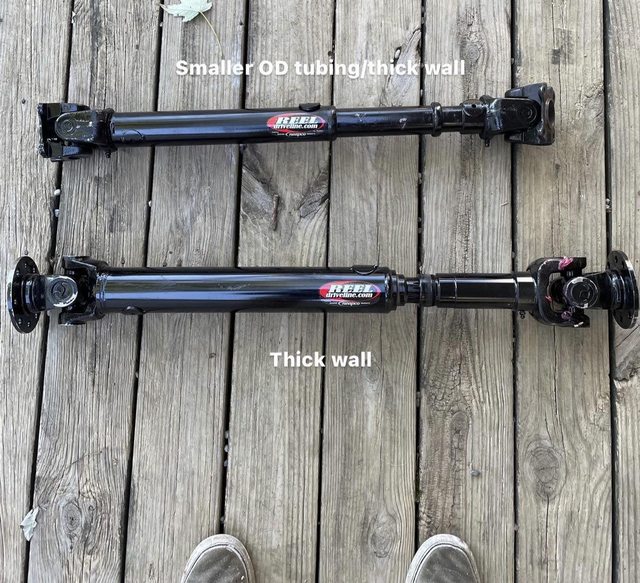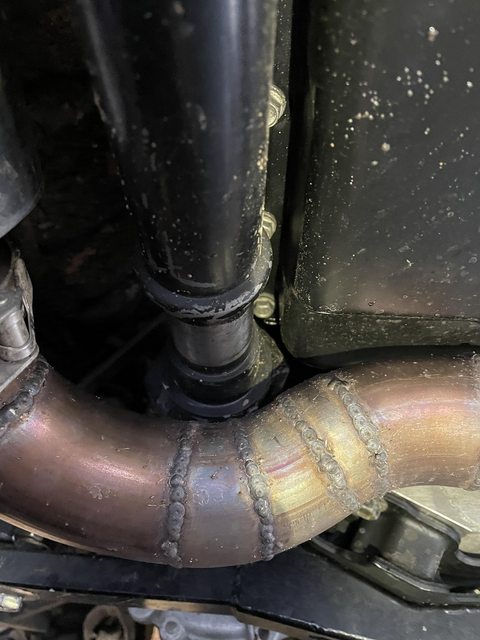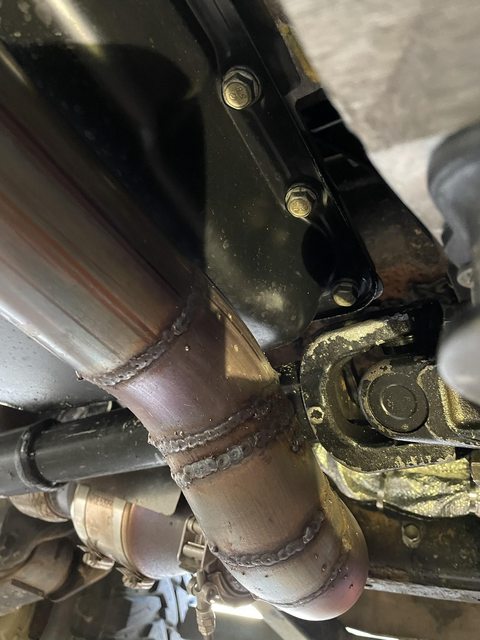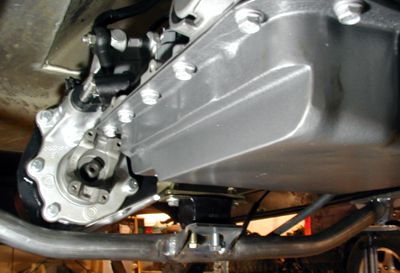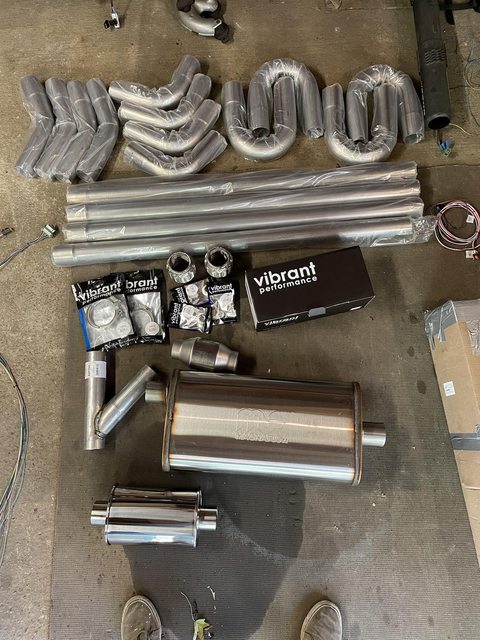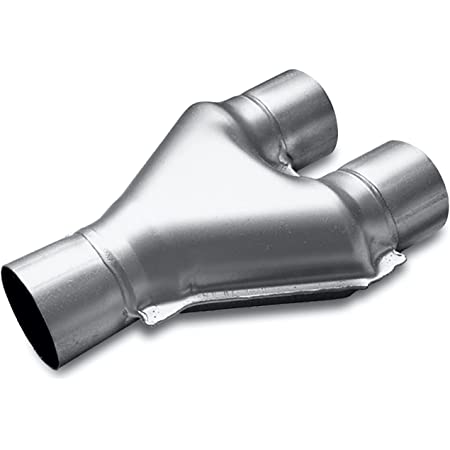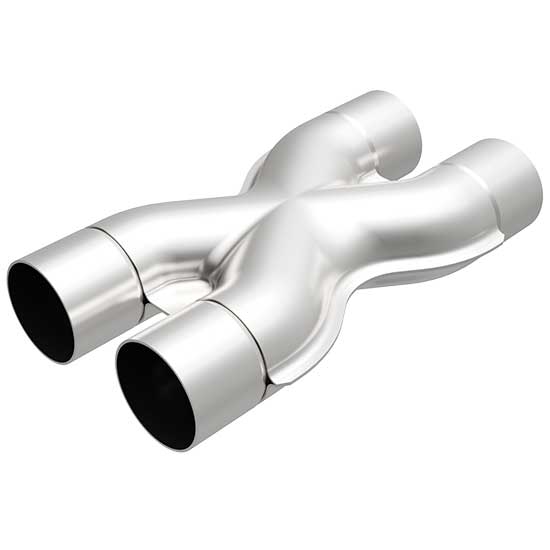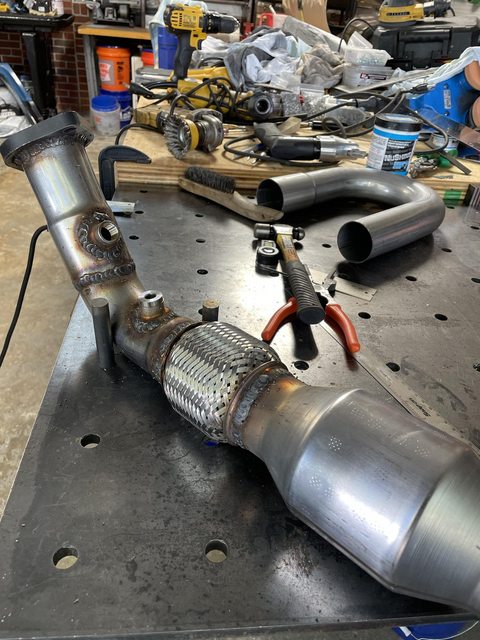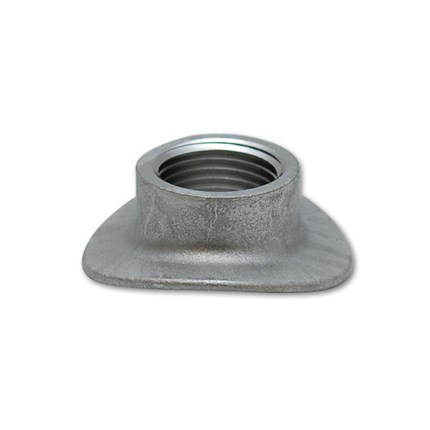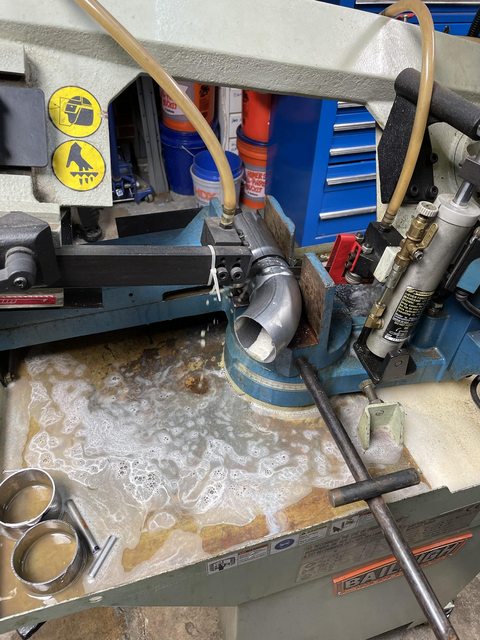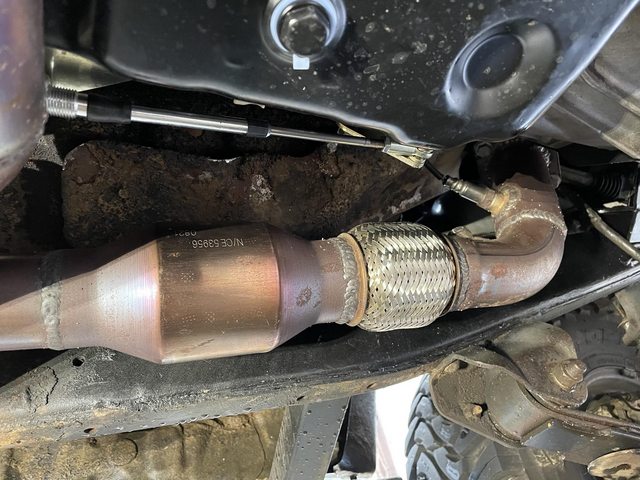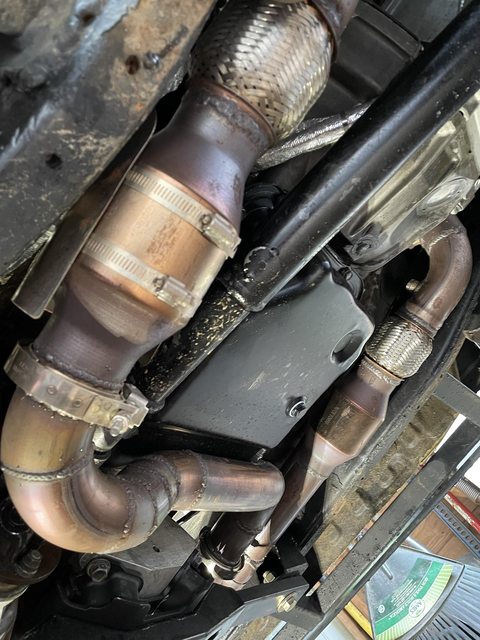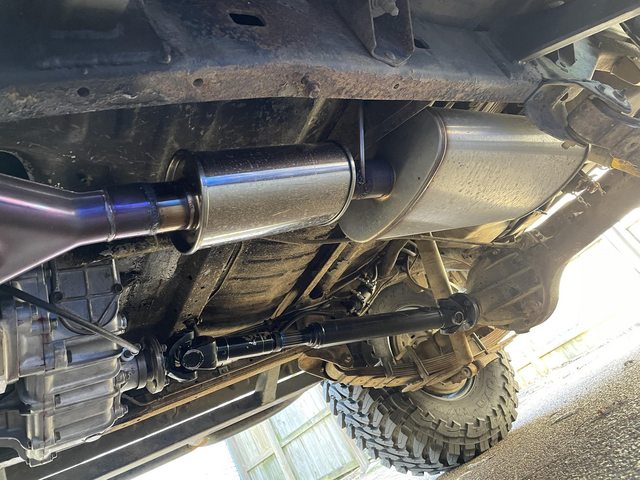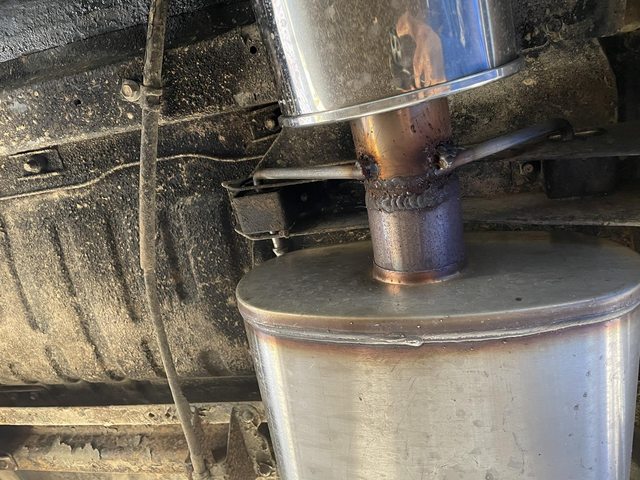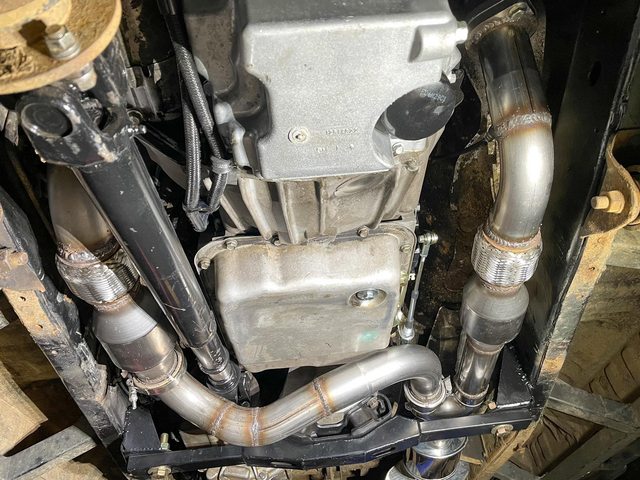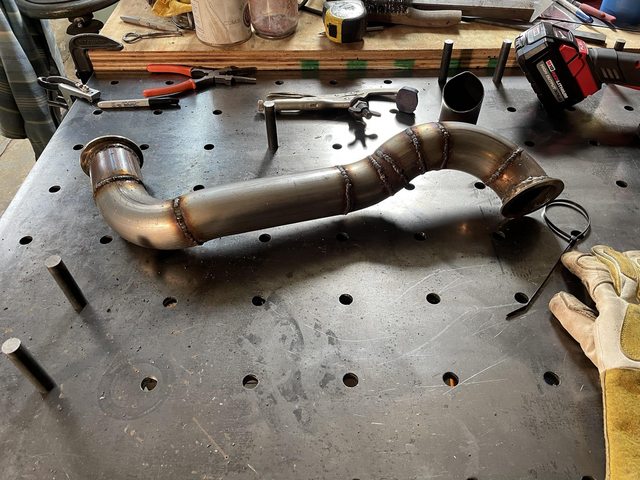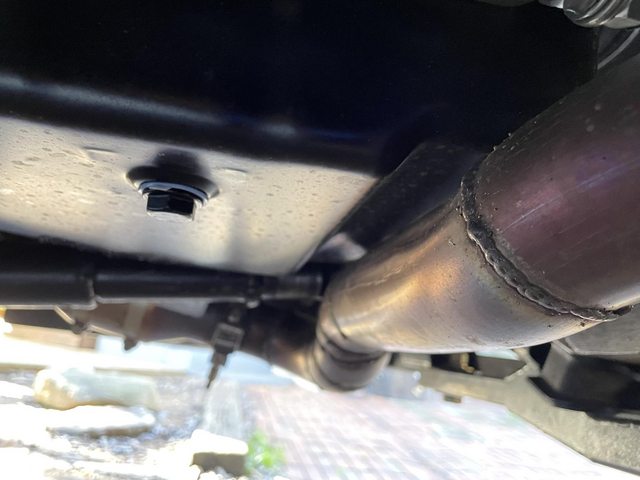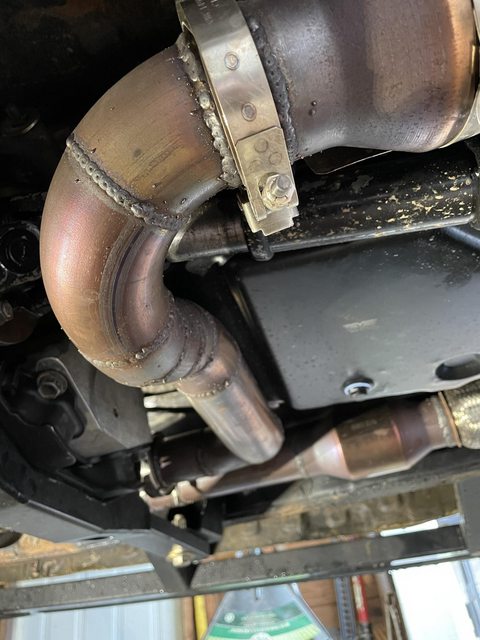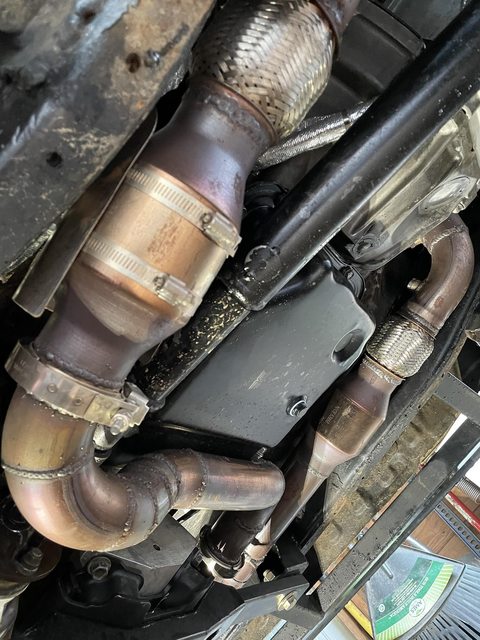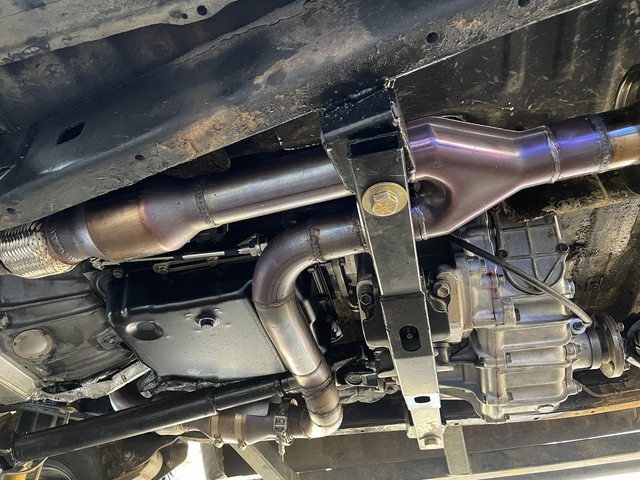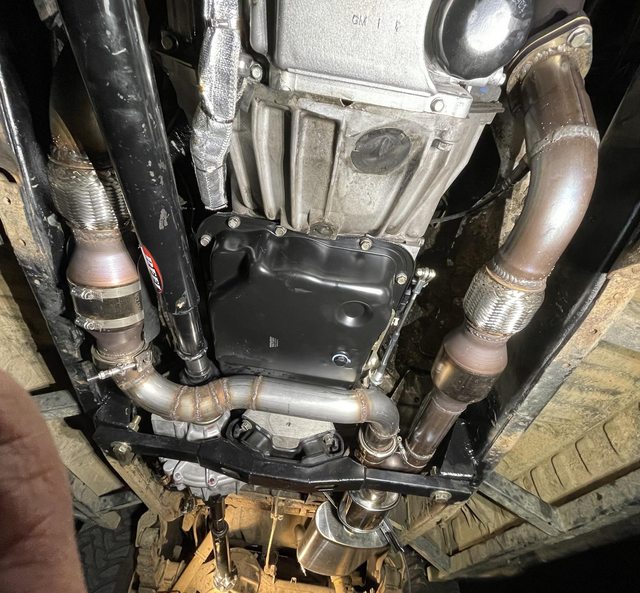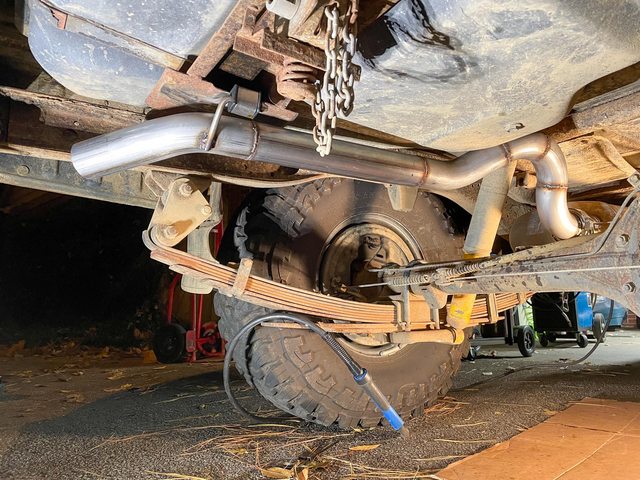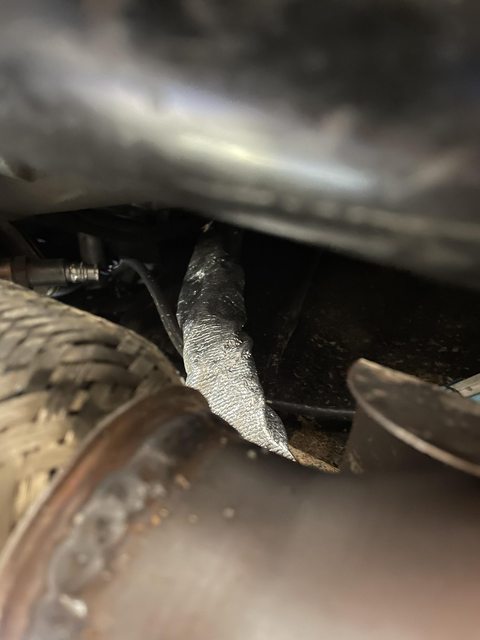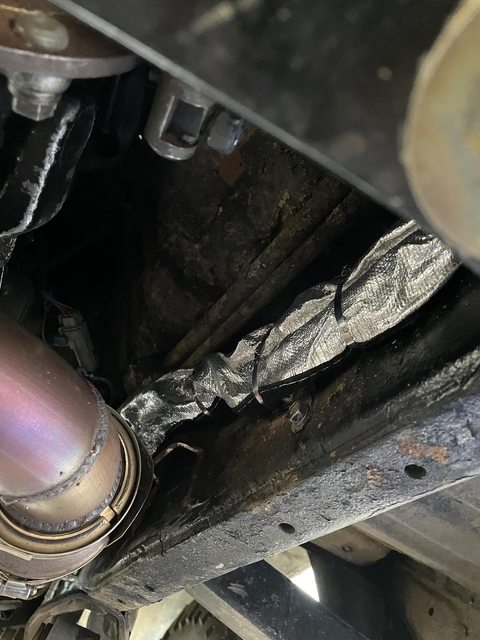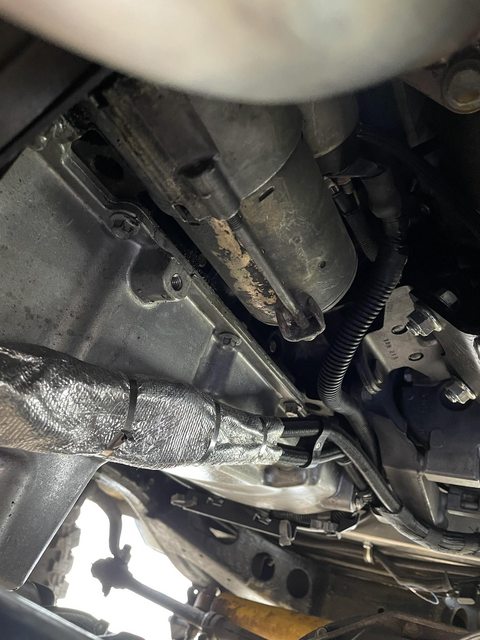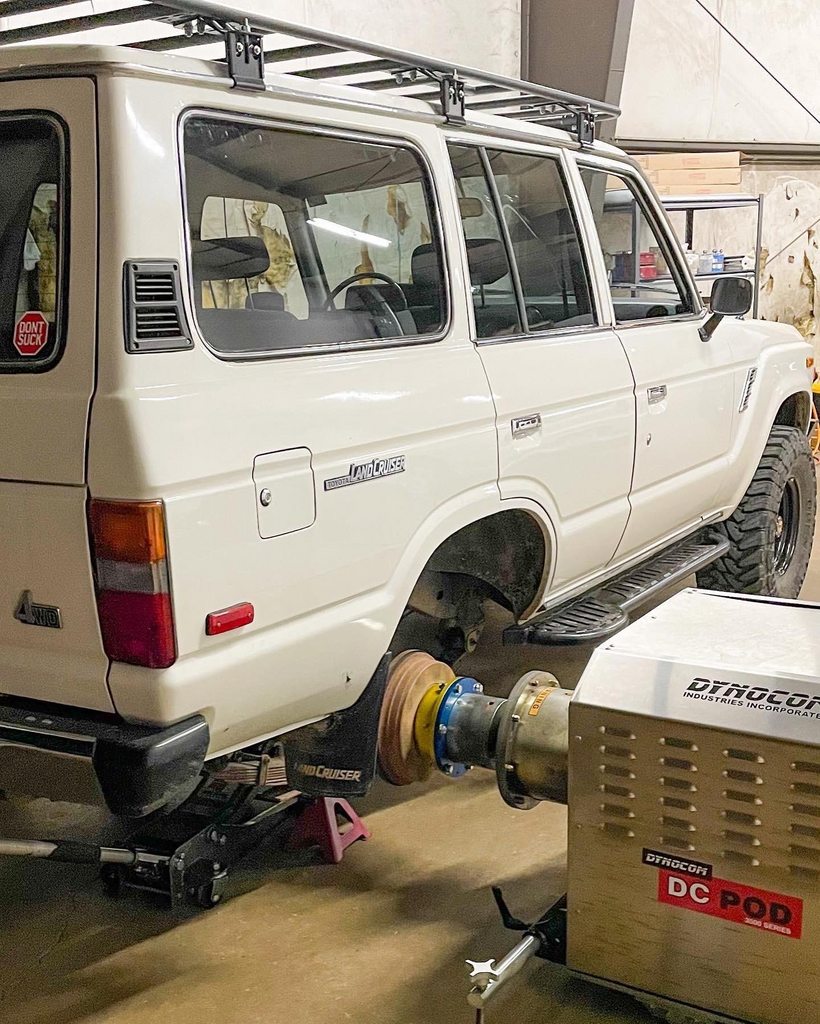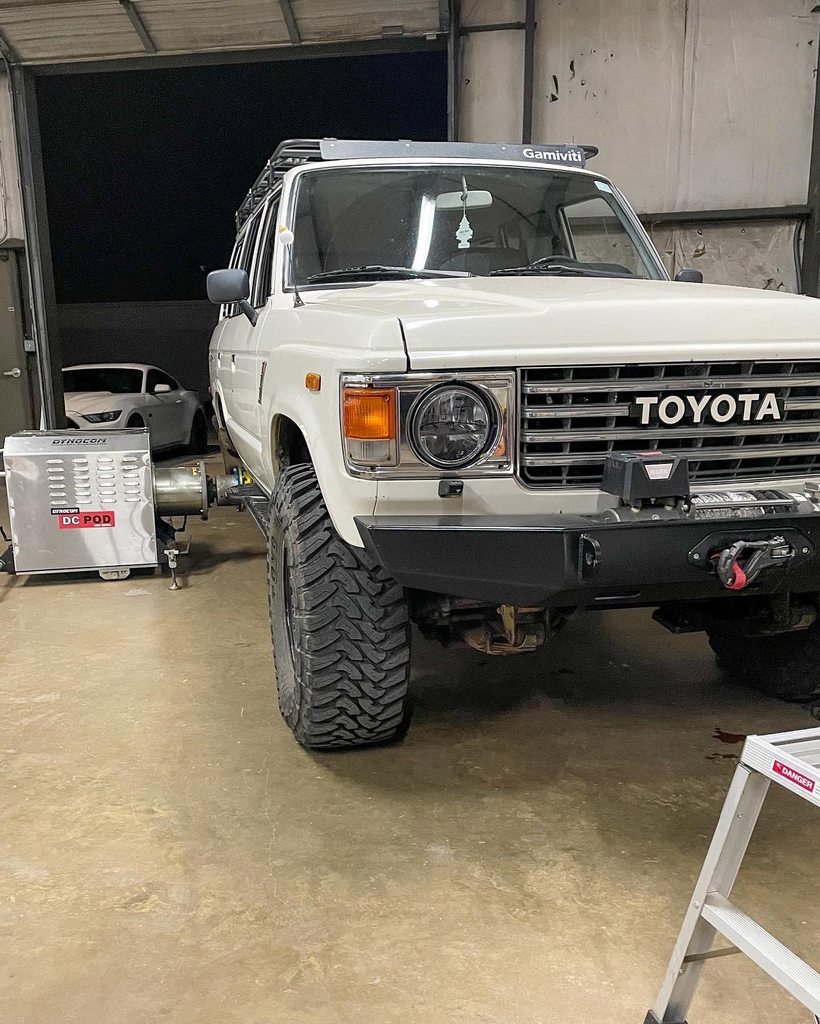For exhaust you have a couple of considerations and pros and cons for each of them. Really there are two choices here. Take it to an exhaust shop, or do it yourself.
If you decide to take it to a muffler shop, you dont have to worry about messing with it as the shop will be doing it. There are two types of exhaust shops. The ones who build custom exhaust using stainless mandrel bends or pie cuts, use tig welders, and cost a lot of money... and the kind that use mild steel, tube benders, and mig welders. You will definitely pay for the difference here, as a shop at the former will cost over $2-3K or higher and the latter will be $1.5-2K in expense. You are paying someone else to do all the work for you and the exhaust needs some clever routing.
The downside to using the cheaper option is that the mild steel will rust. Every single bend in your tube will have a crush in the inside corner of the bends. The benefit is that its cheap, quick, and you dont have to do anything.
A good middle ground here is just doing it yourself. There are a bunch of ways you can do this to be cost effective, but it will cost you your time. I was able to do my own exhaust using high quality name brand stainless parts, stainless tubing, quality exhaust connectors for less than half of what i was quoted at a local exhaust shop to build the same exhaust out of mild steel using unknown parts. Think long and hard on this because the exhaust will be important. You have done all of this work so far on your LS Swap, might as well give the exhaust a shot. Before doing this, i have never welded any type of exhaust before.
The rest of this post is assuming you are planning on doing this yourself. A few things to keep in mind before even getting started.
-welding exhaust is all about fitment. You can not cut exhaust tubing with an angle grinder and cut off disc and expect it to look good or weld properly. Gaps in the fitment will cause really bad welds and your mig wire will blow straight through the work piece.
-You will need access to the proper cutting equipment
-you can use a mig welder on stainless exhaust just fine
-a belt sander is a life saver
-a rolling creeper will save your lower back!
So for fitment, it is really important you have access to a way to cut true square straight cuts in exhaust tubing. Heres a few from cheapest to most expensive:
-On the cheaper end of this you have an abrasive chop saw. This is basically a giant angle grinder that you use like a miter saw. These are cheap, loud, and make a ton of grinding dust and each cut will be needed to be cleaned up quite a bit.
-Portable band saw with a blade that will cut stainless can be used if you clamp your material down in a vise, but you have to keep a steady hand and ensure your cuts are very straight. Swag offroad makes stands for these that will turn them into vertical band saws.
-Cold chop saw like the evolution metal cutting chop saw will make quick work of this and give you super clean cuts with minimal clean up, but is very loud
-horizontal/vertical band saw with blade to cut stainless is the best bet here. This is the most expensive option though and not everyone will have access to this.
The way you are cutting these tubes is really important. If you want to butt two pieces of tubes together and weld them, you need perfect fitment. your cut across the pipe has to be perfectly square so the circle of the tubing is completely intact. An angle in your cut off of square will turn your round tubing into an oval and create gaps, weird connections of pipe that dont line up, and airflow restrictions. A nice way to get around not having perfect fitment is to use a tube expander to create a slip fit connection between the two pieces of tubing. These are nice because it will create a good fitment, and you do not lose any tubing diameter in the process. I personally did not like the look of the slip fits so i just made sure to ensure proper fitment and butt welded everything. If you use slip fits, your mandrel bend kit will come with slip fit ends already in them.
Something that will save you hours on this project is a belt sander. It will clean up your cuts and you can put a tiny bevel around the edge with ease. Then just wipe with acetone. You got to be careful cleaning up your cuts with a flap disc because you can easily create gaps in fitment by removing too much material.
Another thing to keep in mind is that whether you are Mig welding or tig welding, using mild steel or stainless… the material prep is just as important or if not more important than the welding technique. You can be the best welder on the planet but if you are welding contaminated improperly fitting materials it will never turn out looking good. For butt joint welds you have to have no gaps. I can’t stress this enough. Everything has to butt up together perfect.
Materials must be cleaned properly. After you cut each section of tube you will want to wipe each weld surface down with acetone and make sure it’s deburred. If you are using stainless exhaust you will want to use a sanding belt or abrasive disc or flap disc that has only ever seen stainless steel. For example if you use a sanding belt that has sanded mild steel you could potentially impregnate your stainless tubing with fine bits of mild steel and your welds will rust before your tubing. If you want to go even more OCD, just before welding you can hit the weld surfaces with a torch to burn off any remaining oils.
Now that you have a way to cut the tubing all lined up, you need to decide on what parts you are wanting to use. Whether or not you are wanting to use catalytic converters, and what kind of exhaust tubing you are wanting to use.
For tubing you can use mild steel, aluminized steel, 409 stainless, or 304 stainless. In that order it goes cheapest to most expensive, and will rust more to will rust the least. You can order the tubing from summit in a kit that comes with way way too much pipe that will have a lot of straights, and different angle bends. These posts are assuming you chose 409 or 304 stainless. Honestly, 409 is just fine for an offroad truck exhaust. Most of the "stainless" mufflers you buy are 409 stainless and not 304... looking at you magnaflow. If you look at the photo below, you can see that the muffler looks different than the resonator. Thats because Vibrant uses all 304 stainless and magnaflow uses 409
As far as diameter goes, 2.5 or 3 inch is just up to you. It is much easier to tuck up 2.5 inch tubing so that is what i went with. You could go 2.5 tubing to 3 inch once the two pipes hit your connector pipe as well. I wish i did this, but i just did 2.5 all the way back because i didnt feel like buying more exhaust tubing
Cats or not, thats a choice for you to make, as well as mufflers. There are entire threads on both of those topics longer than this swap thread. For me personally I stick to straight through mufflers, and stay away from chambered mufflers like flowmasters as they are more restrictive and i dont personally care for the sound of them. Cats will keep your exhaust from smelling like gas, thats about it. The longer the muffler, the quieter it will be. I used a 22 inch magnaflow straight through muffler with a vibrant ultra quiet resonator and it sounds absolutely amazing. Nice and quiet at idle. Opens up when you get on it, absolutely zero drone or rasp.
You will however want a resonator, as it will eliminate highway drone and exhaust rasp and pop.
There are many many ways to connect exhaust pieces, and for this exhaust you will at least need 4 connectors. I have yet to find anything that beats Vband clamps. In comparison everything else just seems old and outdated. No gaskets, easily removed and can be installed very quickly. If you splurge for anything in this, buy nice Vibrant vband clamps. You can do some research but they are machined differently than cheaper vbands to ensure proper fitment and no leaks. I would rather have a cheaper muffler than not have these vbands.
Youll need 2 flex joints, I used vibrant for these too but you can save a little money on these as well. These will allow your exhaust to move with your motor and alleviate the stress on your exhaust tubing.
You will also need one weld on exhaust hanger and three stainless exhaust hanger rods. Just get a straight rod for this, youll heat and bend it to suit your needs.
Last youll need a Y pipe or an X pipe (explained later) and 3 vibrant weld in O2 bungs with one O2 cap.
Heres an image of just about all the exhaust parts, missing 2 v bands here and the Y pipe in this photo looked way better online. Dont buy one like this, its garbage. Notice that the muffler is center inlet and offset outlet. Youll need this offset outlet to clear your driver rear shock absorber.
This is the type of Y pipe you would want.
If you were using an X pipe you would want this.
The Xpipe will sound much better and has better exhaust scavenging than the y pipe will, but the y pipe will be much easier to install.
Now that you have your parts you are going to want to figure out the routing of the exhaust. Theres really two ways you can do it, either run a crossover under your front output of your tcase or over the rear output of your t case. From there you will be able to figure out what muffler and joiner pipe to use.
I chose to run the crossover under the front output of my transfer case as it gave me more room for a resonator and muffler on the drivers side of the transmission. It also gets the hot exhaust pipe away from your wires and fuel lines quicker this way. This is what i would recommend.
From here youll decide on the piping. you have a lot of options. Join the 2 sides of the exhaust into a y pipe then go back as one exhaust using a 1 in 1 out muffler and follow the stock exit location. You could also join the 2 sides of the exhaust into an xpipe and into a 2 in 1 out exhaust and back out to the stock location or even run both sides of the front exhaust into an x pipe and 2 separate mufflers and do true dual exhaust out the back. Only use the Xpipe if you are not planning on running a resonator. You can use two small bottle style resonators towards the end of the exhaust but they wont be as effective as a larger one more upstream.
As far as the resonator goes, you want this resonator to be as forward in your exhaust, closest to the motor as you can get it. The further back it is, the less it will do its job and the worse it will sound. A lot of the newer mustang 5.0s have this issue because they run the resonators all the way at the end of the exhaust right at the exit tips.
You will also need an anglefinder, i used a cheap digital husky one from home depot with great success, as well as a pack of zip ties, some sharpies, and a steel ruler.
As far as welding goes, you can weld stainless with mig, as long as your mig welder has a stainless setting. I welded all of this on a miller 211 on stainless setting, but you will have to use the appropriate wire. Hobart makes wire specifically for stainless, its ER308L. 0.030in wire works just fine. Technically you should use Trimix welding gas (mostly helium with argon and co2) to mig weld stainless, but i just used normal C25 (25% CO2/75% Argon) and it welded fine. It just spatters a bunch and isnt as shiny and pretty. I am planning on tearing all of this out and tig welding a new exhaust down the road, but ive not had one issue with any of my mig welds on my current setup.
There are HOURS of DIY exhaust videos on youtube. Make sure to watch the videos of the guys tig welding stainless exhaust, while you might not be doing that level of work, its good to see how they work and what they do before you give it a shot. You can get a good idea on cutting, fitment, routing, etc. Theres a lot out there to watch. Other good videos to watch are videos of guys building custom turbo charge piping as its similar in routing and cutting and fitment.
So at this point you should have a way to cut your exhaust tube, a way to clean your cuts, your exhaust system components, and a relative idea on the routing of your exhaust. All thats left is to just go do it.

